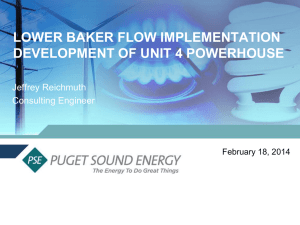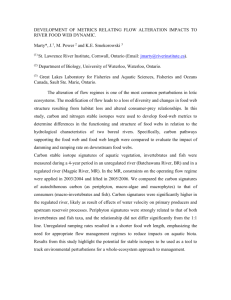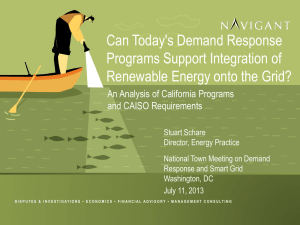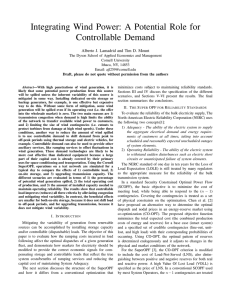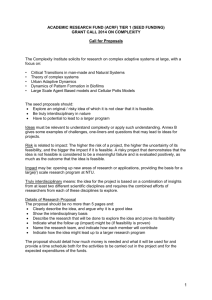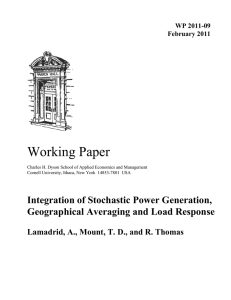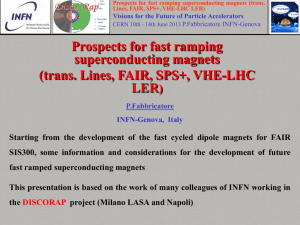Phase Two Wind Integration
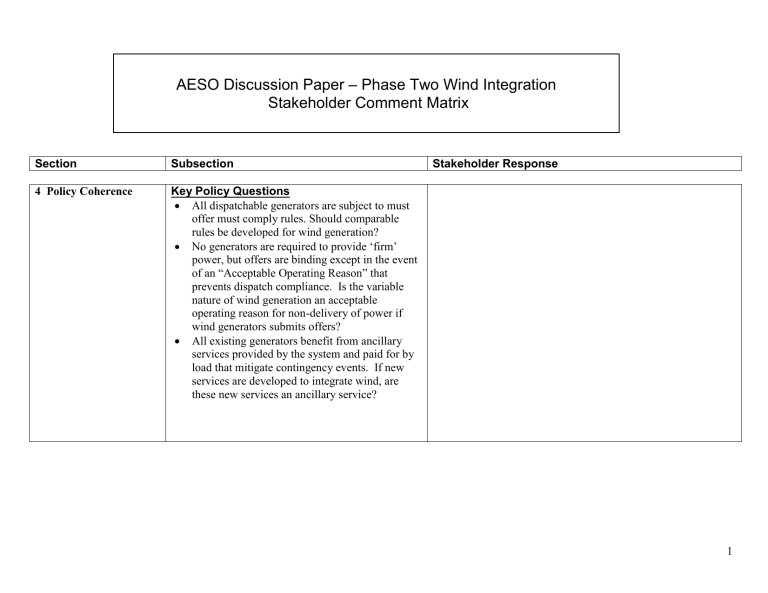
Section
4 Policy Coherence
AESO Discussion Paper – Phase Two Wind Integration
Stakeholder Comment Matrix
Subsection
Key Policy Questions
All dispatchable generators are subject to must offer must comply rules. Should comparable rules be developed for wind generation?
No generators are required to provide ‘firm’ power, but offers are binding except in the event of an “Acceptable Operating Reason” that prevents dispatch compliance. Is the variable nature of wind generation an acceptable operating reason for non-delivery of power if wind generators submits offers?
All existing generators benefit from ancillary services provided by the system and paid for by load that mitigate contingency events. If new services are developed to integrate wind, are these new services an ancillary service?
Stakeholder Response
1
5 Analysis
6 Options
The results indicate that as the amount of wind on the system increases, there is the potential for an increase in frequency and magnitude of ACE events.
The analysis is intended to be indicative only and the AESO will work with stakeholders on the development of further studies in the working groups.
6.1 Reliance on the Energy Market Merit
Order
AESO identified reliability and price fidelity concerns.
Relatively easy to implement but would likely require revised standards for response time to a dispatch for generators.
Is it appropriate to express the costs of wind integration and ramping requirements in the energy price?
Is this a feasible solution examine further, either as a stand alone approach or as part of a combined approach?
6.2 Incremental Regulating Reserve
Treats wind variability as equivalent to generation contingency events to be supported by ancillary services.
Analysis indicates that about 50% of wind generation capacity would need to be
‘backstopped’ by regulating reserve capacity absent changes to the service and/or other
2
measures.
Is this a feasible solution examine further, either as a stand alone approach or as part of a combined approach?
6.3 Refine Short-Term Wind Integration
Recommendations
Several refinements to the phase one recommendations could be developed: o Develop a market solution or alternative to WPM as opposed to the pro rata WPM protocol outlined in the recommendation paper. o Create a new ancillary service that would be used instead of standby contingency reserves to replace lost wind energy when required.
Should wind generation ramping down be treated similarly to a generation contingency event?
Should wind ramping up beyond the capability of the EMMO be treated as wind generation’s responsibility and managed through WPM or an alternative?
Is this a feasible solution examine further, either as a stand alone approach or as part of a combined approach?
6.4 Develop A Ramping Service
A ramping service has benefits beyond wind integration: o There is currently demand for ramping service that is met through regulating reserve.
3
o Regulating reserve product could be redefined to remove the ramping component. o As intertie capacity increases the need for a ramping product could also increase.
Would a ramping service be an ancillary service?
How much ramping service should the system procure if it is an ancillary service?
Is this a feasible solution examine further, either as a stand alone approach or as part of a combined approach?
6.5 Wind Firming Service
A wind firming service would ‘firm’ aggregate wind production based on a forecast.
The service would be paid for by wind as a market service.
Takes advantage of diversity but requires wind generation to provide a ‘firm’ product to the market.
Is this a feasible solution examine further, either as a stand alone approach or as part of a combined approach?
6.6 Must Offer Must Comply Obligations for
Wind
Treats wind generation the same as all other generation and could be adapted to an extent to recognize the characteristics of wind.
Allows a unique solution for each wind
4
7 Next Steps generator but may not be efficient in terms of total capacity required to backstop variable generation.
No generation is 100% ‘firm’, so what is an appropriate standard for wind generation in order to maintain a level playing field?
Is this a feasible solution examine further, either as a stand alone approach or as part of a combined approach?
7 Next Steps
The next steps in the wind integration program include:
Receive stakeholder feedback on the phase two discussion paper.
Form working groups to analyze and discuss options.
Target to Release Recommendation Paper at the end of Q2, 2011.
5
